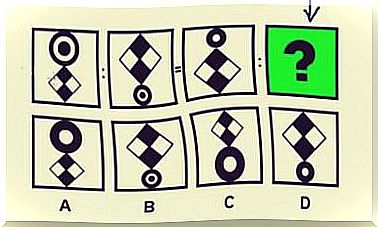What Are The Stages Of Mourning When A Couple Breaks Up?

When am I going to be okay? Why do I go from sadness to anger so quickly? These are the most frequent questions asked by people going through the stages of mourning inherent in a relationship break-up. The breakdown of a couple and the bereavement that this causes are among the most common reasons for psychological counseling among adults.
After a break-up, individuals go through different phases that make up a framework of mourning. In this article, we will explain to you what are the stages of mourning inherent in the breakup of a couple and what characterizes each of them.
Phase 1: impact or state of shock
This is the beginning of mourning. In this phase the person cannot believe it, it costs him to become aware of the loss and to see the new situation. Emotionally, in the impact or shock phase, we observe a lack of reaction and the person acts as if nothing has happened, as if everything is the same.
The denial phase is more marked in those “left” and less noticeable in those who “left”. This is because the person who decided to break the relationship and end it has already gone through the phase of denial and shock. And therefore, whoever makes the decision to end the relationship has already worked on the new situation and is not showing denial.
Once he is aware of the rupture and the person is able to visualize what will happen, the next phase presents itself, that of denial of the loss.

Phase 2: denial of the loss
In the phases of mourning inherent in a relationship breakdown, there is denial. As part of the latter, the person is aware of what they have lost but does not want to accept it, refuses to accept that the relationship is over and fantasizes about a possible return. A typical example of this phase is the idea that the breakup may have been a mistake or the result of anger getting out of hand.
The mind, in the denial phase, is focused on finding ways to solve the problems, and thus be able to resume the relationship. This phase has an adaptive function, which allows us to gain time to “digest” the loss, to allow us to continue to assume our routine and our obligations, and to be able to gradually become aware of the changes that have already taken place and those that are taking place. will produce.
Phase 3: deep sadness
In this phase we begin to assume and to feel concretely what the rupture represents. The person begins to be aware of how their life has changed and will continue to change. And all of this, all of these consequences of loss are the ones that generate deep sadness accompanied by a negative view of the world, of the future and of oneself.
Therefore, this phase is characterized by psychological functioning following Beck’s cognitive triad, a state of deep sadness and symptoms of depression. Sadness is a necessary emotion for us to truly come to terms with the loss, and it will help us connect with what has happened and gradually begin to cope with the loss.

Phase 4: guilt
The guilt phase is one of the most characteristic of the mourning phases inherent in the breakdown of a couple. This is because guilt does not kick in so strongly when we face another type of grief. However, it is one of the most notorious and complicated phases to overcome when grieving over a breakup.
Guilt causes us to think about what we could have done or said to keep the relationship from ending. The brooding and obsessive thinking aimed at finding those responsible for the breakup can psychologically exhaust the person and cause a great state of anxiety.
Carrying 100% of the responsibility during a breakup is counterproductive and is above all very unfair. The couple is a two-person team and the responsibility for the breakup is still shared. Let’s try to distribute the guilt we feel, understand it as a shared responsibility, and direct our mind to the future.
Phase 5: anger
Once we stop feeling that it was all our fault and are able to share the responsibility for what happened, we start to feel anger. In the grieving phases resulting from the breakup, the anger phase is the most “beneficial” or “positive” in that if something or someone makes us angry, we try to avoid it and let us seek to remove it from our existence. And this, in the event of a breakup … it’s great!
Why is anger the best thing that can happen to us when a relationship breaks up? Because anger, properly directed, is a very powerful engine. In the first place, it takes us away from the person we have lost and this is essential in order to be able to overcome the situation. Contact with an ex during the grieving phases keeps people in the phase of guilt or sadness and does not let them go much further.
We can be friends in the future, but not during grief. Therefore, anger helps the person to stay away from those who have hurt them. Let’s use our anger to improve ourselves personally, to think more about ourselves and to take care of ourselves. But… be careful, let’s not get stuck in this phase: if we do, that same anger that protected us will turn against us.

Phase 6: acceptance
If we have experienced and used anger correctly, we will be able to move on to the acceptance phase. Emotions, in this phase, are not totally positive or enriching, they are emotions that allow us to see what has happened as an experience in the history of your life, with its advantages and disadvantages.
People in the acceptance phase begin to take responsibility for what has happened, to think for themselves and to direct their minds to the future and not to the past or loss. Acceptance is the definitive way to overcome the breakup and helps us think about building a future by and for ourselves.
In addition, it is important to keep in mind that the phases of mourning inherent in a breakdown of a couple are not linear or correlative, which is particularly noticeable at the onset of mourning. In other words, the more recent the loss, the more changeable the stages of mourning. We can go from phase 1 to phase 3, then to phase 2 and then 4. As we work through the loss and grieve, we will find that going back is less frequent and that we move forward more often. : we no longer feel so insecure and we start to look to the future with different eyes.










